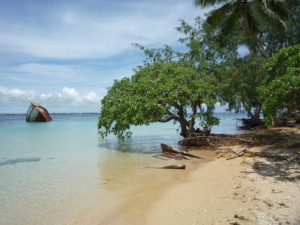Top 10 Facts About Living Conditions in Tonga

Tonga is a tropical group of islands located in the South Pacific. Tonga is rich with a vibrant culture and population and the islands are known for their tropical beauty. While the lives of Tongans have vastly improved in recent years, there is still much that can be done. These 10 facts about living conditions in Tonga showcase both the struggles that Tongans face on a daily basis as well as the positive aspects of life in the country.
Top 10 Facts About Living Conditions in Tonga
- Water quality is an issue – The majority of Tonga’s freshwater supply is in the form of groundwater, collected either through rainwater harvesting or limestone extraction. Because Tonga has no coordinated, centralized system for caring for waste, individuals and communities manage wastewater on-site. This presents difficulties in monitoring water quality and sanitation, making Tongans susceptible to parasites and waterborne diseases.
- Noncommunicable diseases are quite common among residents – Tonga used to face challenges with deaths caused by infectious diseases, but now the country is facing a new primary cause of death: non-communicable diseases. According to a 2008 report, non-communicable diseases accounted for more than 70 percent of deaths in Tonga during that year. These diseases include respiratory and cardiovascular conditions, as well as cancer and diabetes. However, the Tongan Government has begun to take action against this growing problem and recently launched the Tongan National Non-Communicable Disease Strategy, which sets out to reduce the number of individuals in Tonga with non-communicable diseases.
- Tongans have excellent access to healthcare and medicine – According to the World Health Organization (WHO), 100 percent of the population has access to health care and medicine. However, the quality and supply of these hospitals and medicines can be an issue in some of the more remote areas of the country, such as in the outer islands.
- Tonga has a small, but open, island economy – The country largely exports agricultural goods and fish. These items make up close to 80 percent of Tonga’s total exports. Tonga’s economy is also based around tourism, although this industry has faltered in recent years following the global economic crisis of 2008.
- Early education in Tonga is a priority – Almost 95 percent of the resident population with children between the ages of 6 and 14 are enrolled in school. Once children reach the age of 15, however, school attendance decreases. Overall, almost 30 percent of those between the ages of 15 and 19 do not attend school. Along with this, female school attendance is generally higher than males. This gap only increases in secondary school, where female enrollment is 67.4 percent and male enrollment is only 54 percent. It has often been reported that, as they grow older, many boys who fail their exams have chosen to quit school altogether and help their families by working.
- Housing can be a problem – This can be largely attributed to the wet, tropical climate and severe weather found in the South Pacific region. A recent study found that one of the most prevalent types of structural damage to homes in urban parts of Tonga was water damage, which was characterized by mold growing predominantly in the sleeping and cooking areas of the homes. Furthermore, many homes are often destroyed because of the harsh weather. For example, in 2018, Tropical Cyclone Gita hit various parts of Tonga, affecting roughly 70 percent of the population and completely destroying over 1,000 homes.
- Child marriage is common – Between 2015 and 2017, more than 100 child marriages took place in Tonga. These marriages were able to take place because of specific sections from Tonga’s Births, Deaths and Marriage Registration Act of 1926 that allow children between the ages of 15 and 17 to be married if there is parental approval. However, in many of these situations, young girls are pressured into marriage due to parental desires or teen pregnancy. To help combat this, a campaign was launched in 2017 called “Let Girls be Girls!” The campaign, which is supported by the Tongan Ministry of Justice, hopes to repeal the law that currently allows child marriage in Tonga.
- Close to 60 percent of Tongans are dependent solely on agriculture for food – Though acreage for agricultural goods is increasing, production and quality is decreasing due to unsustainable agricultural practices, pests, diseases and increasing urbanization. Attempts have been made in the past to try and stabilize food security, but only recently have any methods proven effective. In 2015 the Tonga Framework for Action on Food Security (TFAFS) was developed to ensure food security as a top priority. TFAFS focuses on combining a variety of methods to address food security, focusing on both immediate and long-term solutions.
- About 25 percent of households in Tonga have incomes that are below the poverty line – 88 percent of Tonga’s population live in rural areas of the country, which experience the highest rates of poverty and harshest living conditions. The population in these rural areas has been slowly declining, however, and is expected to drop another 7 percent in the next 30 years. However, this decline may present some problems for the Tongan agricultural industry, which may face labor shortages.
- Tonga has a relatively young population – The median age in Tonga is only 23 years old, and more than one-third of the population is 14 or younger. Additionally, just over 6 percent of the population is over the age of 65. However, life expectancy is slowly increasing in Tonga, and as of 2017, the average life expectancy had risen to 73 years old.
These 10 facts about living conditions in Tonga demonstrate the progress that the country has made in improving the lives of its people. Though there is still much work to be done, Tonga is working hard to become a strong, self-reliant nation.
– Melissa Quist
Photo: Flickr
